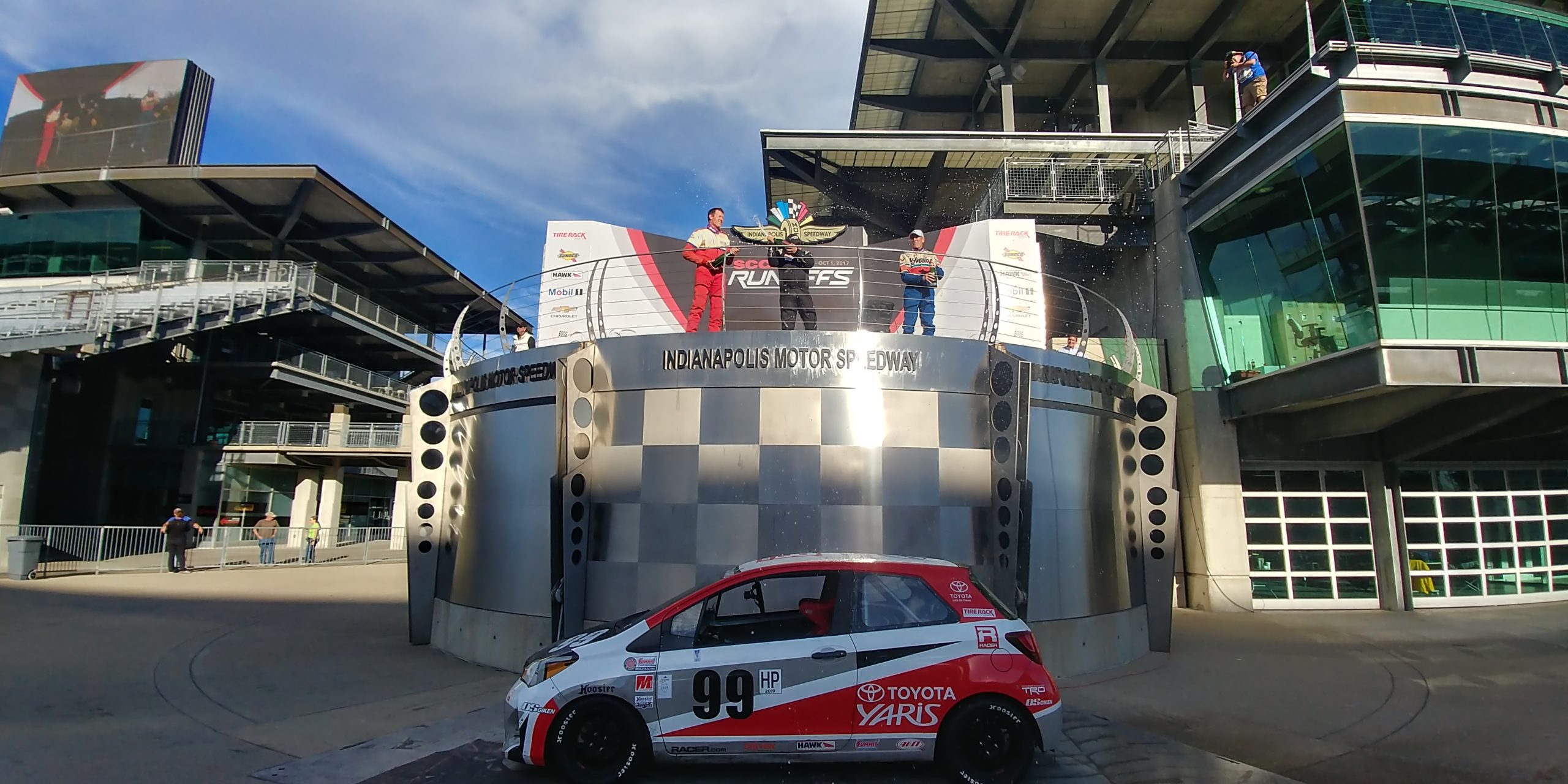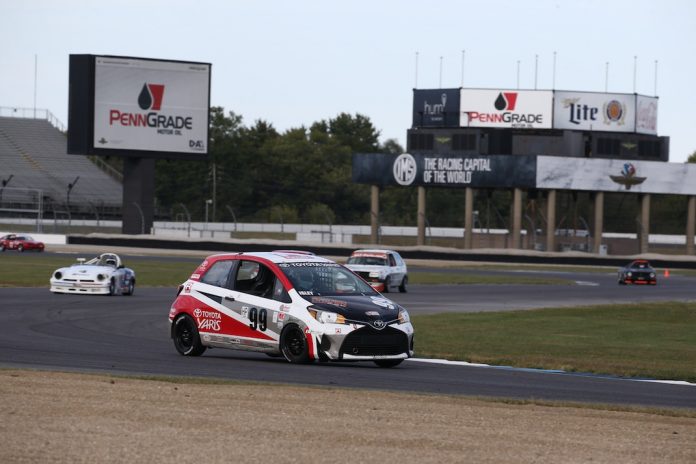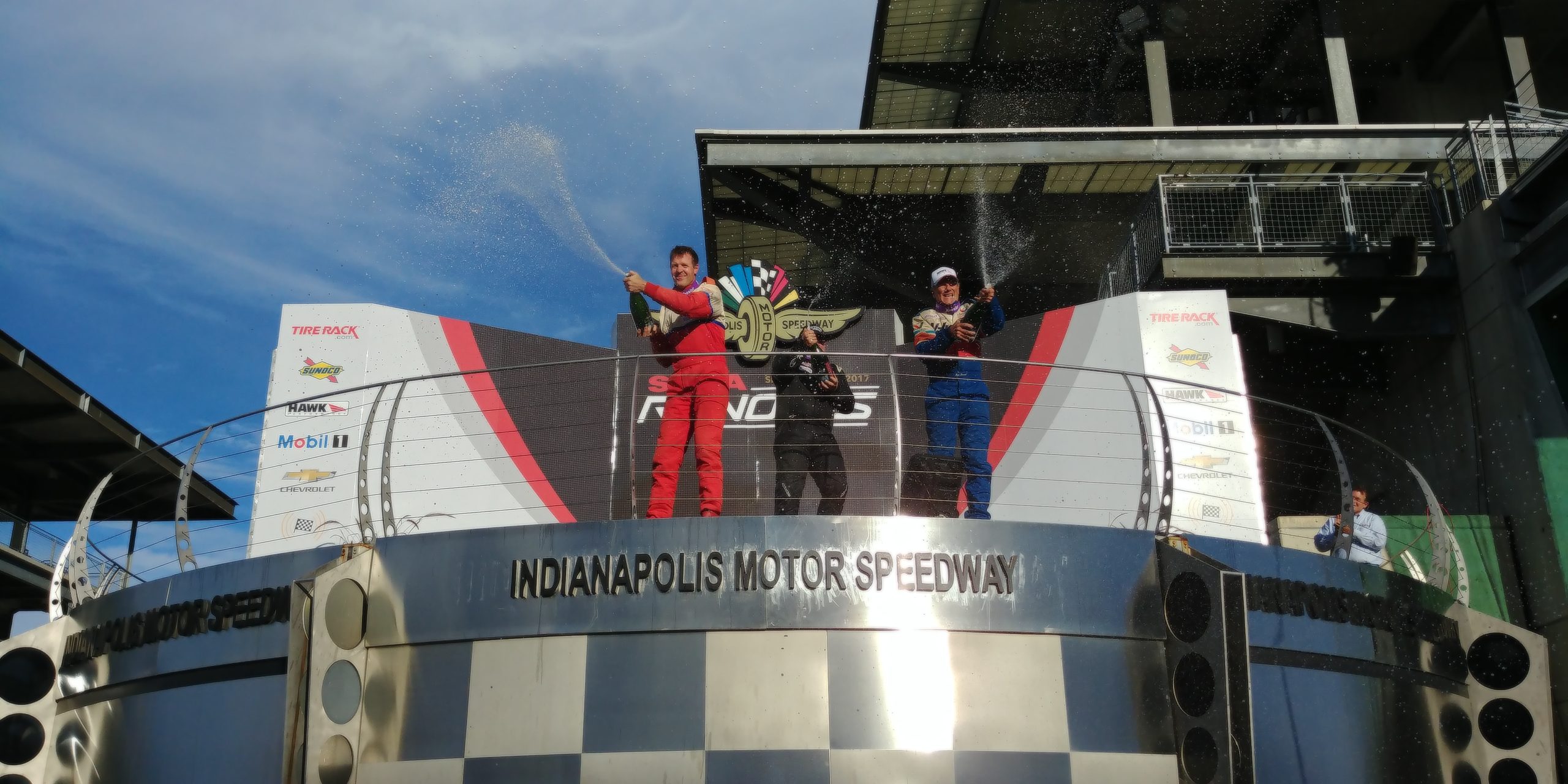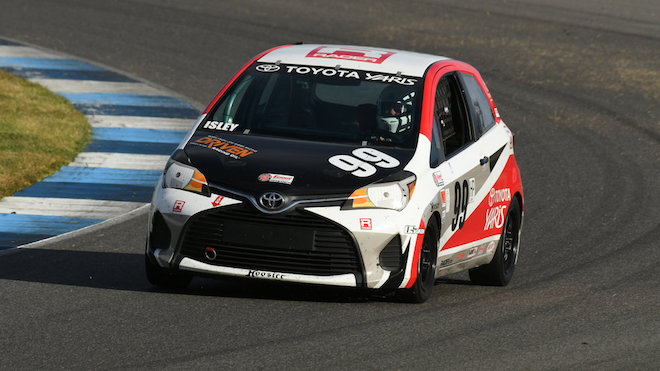Here at CXC we are fortunate to spend time with many of the best race car drivers in North America who compete in Indycar, IMSA and Pirelli World Challenge. However, we enjoy spending time with gentlemen racers and club racers as well – utilizing our simulator and coaching tools to give them a leg up on the competition.
Recently, we were able to spend some time with SCCA club racer and editor at SportsCar Magazine, Jason Isley. Jason is a long-time road racer and autocrosser, and he stopped by a few weeks before the SCCA Runoffs at Indianapolis Motor Speedway to get acclimated with Indy’s road course. He was initially a skeptic of the benefits of a racing simulator, and while we won’t claim any credit to his victory in H Production at the Runoffs, we are glad that he found the time on the simulator beneficial.

What’s your racing background?
I have been an SCCA member and competitor since 1993. I’m a four-time SCCA Solo National Champion, winning B Stock from 2005-2008 in a Mazda RX-8. I started attending the SCCA National Championship Runoffs when we began the Toyota Yaris H Production program in 2010 and since then I have been on the podium at the Runoffs five times with one bronze, three silvers and gold in 2017.
Tell us about your class, H Production.
The Production category brings together a very eclectic range of cars from late model cars that can be found in the showroom today to cars one might expect to only see at a vintage race – and does a good job of balancing the classes so they can all race together. In H Production we will see 1960s era British cars going head-to-head with Reagan administration era VWs and Hondas, as well as much newer cars like our Toyota Yaris, the Mazda 2, and Mini Cooper. This range of cars makes for some great racing. In the last two years, H Production has seen a more than 50-year spread in model years on the podium at the Runoffs which is quite remarkable.
The Runoffs took place this year on the road course at Indianapolis Motor Speedway, which most drivers had no experience at. Did that help to level the playing field?
The Runoffs going to the Indianapolis Motor Speedway was challenging for a lot of people. Taking away the home-field advantage for all but an elite few that ran it with other groups – and even in those cases it was a different configuration – absolutely helped to level the playing field. From a driving standpoint, after nearly two decades of autocrossing, learning a new track has not typically been an issue for me. The bigger challenge in going to any track for the first time is setting up the car.

You spent time at CXC to get acquainted with the Indianapolis circuit before going to the Runoffs. How did that help you once you got to Indy?
I was a little apprehensive about what I would get out of the experience at CXC. I have used simulators a number of times before, and in those cases I always had some previous knowledge of the track we were driving, so right off the bat I am looking at what doesn’t match up. But with the Indy road course it was something I was essentially seeing for the first time when I sat in the CXC sim, so I was making mental notes so I could compare as soon as I got on the real track.
It was surprising how well the track was represented on the CXC simulator and how similarly it drove. There were really only two areas that were slightly different, one which we expected and one we did not. On the CXC simulator we were aggressively cutting to the inside of Turn 10, with two tires inside curbing, knowing full well that this might not be an option at the Runoffs either due to track limitation or surface. As we walked the track we confirmed that cutting this corner would not be a good idea as the backside of the curbing had a pretty severe drop off that could easily damage a tire, wheel, or knock the alignment out of whack. The other area that appeared different was Turn 1. We had a hard time balancing the car in Turn 1 on the CXC sim, and its only when we saw the real track that the elevation change from front straight down into Turn 1 was visible and likely the reason for the challenge we were having on the sim.
Typically, the Runoffs features a number of test days and those are enough for most anyone to figure out a track, but that was not the case at Indy. It was apparent from the first session we watched that a lot of people were caught off guard, and there were a lot of bent cars and many sessions only stayed green for a handful of laps. Within my first few laps on the track I already felt comfortable, and the track felt familiar, which allowed me to slow down and just use the sessions to scrub tires for qualifying and the race. Had it not been for time in the CXC simulator I likely would have needed to push much harder in practice, putting the car at risk and using additional tires. People can forget how costly it is to run a session in the race car because they are focused on the prize. Putting in those laps ahead of time in the CXC simulator means less fuel burned, less tires used, less wear and tear in general, and most importantly less risk when learning a new track.

How does your mindset change now that you are a Runoffs champion?
I don’t believe it will. The mental game was such a big part of Solo that I think it helped me prepare for the Runoffs. You see people go into meltdown when it comes to the championship events, but I really just try and treat every race the same and that has worked well so far. Even though we are based in California I have never raced at Sonoma (site of the 2018 Runoffs) so getting some seat time in the CXC simulator is absolutely on the to-do list. You never know what will happen with a practice session so having sim laps in the memory bank is a great head start. Additionally, my wife, Jennifer, is looking to race in her first Runoffs at Sonoma and has expressed an interest in trying the CXC sim after seeing how useful it was for me at Indy.

